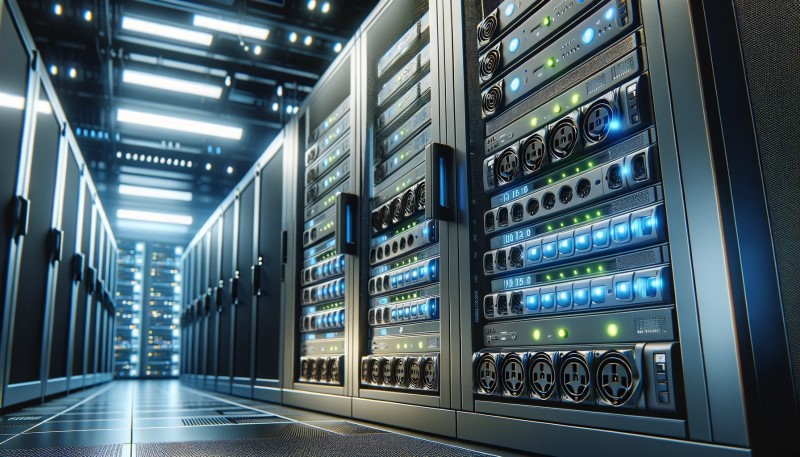Data centers are the backbone of modern technology, supporting the operations of countless businesses, websites, and cloud services. With their role growing in importance, data center operators must be increasingly aware of the challenges associated with managing energy consumption. One critical aspect that often goes overlooked is the importance of planning power consumption based on peak server usage rather than idle power or average load. While it may seem like a small detail, ignoring peak power requirements can lead to costly outages, equipment damage, and inefficiencies that impact the entire infrastructure.
In this blog post, we will explore why power consumption planning in data centers should account for peak power, the risks associated with underestimating power needs, and best practices for managing power to ensure smooth operation in the face of unpredictable server loads.
Power Planning in Data Centers: The Basics
In a typical data center, a variety of equipment and systems need reliable and uninterrupted power. These include servers, storage devices, networking hardware, cooling systems, and uninterruptible power supplies (UPS). For a data center to function efficiently, power consumption must be planned with a careful understanding of how each piece of equipment draws energy over time. This involves considering both the typical idle power consumption and the maximum or peak power usage, especially for servers.
The Importance of Peak Power Consumption
When designing a power system for a data center, it’s tempting to focus on the average or idle power consumption of servers. After all, these systems often consume far less power when not under load than when they are fully operational. However, this approach can be risky, particularly when it comes to managing the capacity of power distribution units (PDUs) and electrical circuits.
The primary reason for planning based on peak power consumption is that a data center’s power needs can spike unpredictably. When systems experience a sudden increase in demand or undergo a restart, they may momentarily require much more power than usual. This is particularly true during events like power outages and UPS (uninterruptible power supply) cutover scenarios.
UPS and Power Outages: Why Peak Power Matters
A UPS is designed to provide backup power during an outage, ensuring that systems continue running without disruption. However, if the UPS must kick in and power is lost, all systems will boot up simultaneously once the power is restored. This simultaneous startup draws a significant amount of power from the circuits at once, which can easily trip breakers if the systems are not carefully planned for.
If servers are planned based on their idle or average power usage, it’s likely that the combined power draw during a power cut will exceed the capacity of the electrical circuit or PDU. This may cause the circuit to trip, shutting down systems and causing an outage that could last for hours until the breaker is reset and systems are rebooted manually.
To mitigate this risk, it’s essential to plan power consumption based on the peak power each server could require. By accounting for the maximum possible draw of all servers and ensuring that total power consumption never exceeds 80% of the electrical circuit’s capacity, operators can prevent dangerous power overloads and minimize the risk of tripped breakers during UPS cutovers.
The Unpredictability of Server Load
Another reason to base power planning on peak power usage is the unpredictable nature of server loads. Servers don’t always operate at a steady or predictable level of power consumption. While some systems may idle for extended periods, others may experience sudden spikes in power demand due to varying workloads, data processing, or unexpected traffic increases.
These power fluctuations can occur at random times and may last for only short durations. Unfortunately, small transient power spikes often go undetected by most PDUs, as they typically measure power consumption in intervals, such as every 5 minutes. As a result, these brief but significant spikes could occur simultaneously across multiple servers, causing the total power consumption to exceed the available capacity.
If many systems draw additional power at once, the circuit could easily become overloaded, tripping the breaker and causing a system-wide disruption. This highlights the need for proactive power planning that takes into account the worst-case scenario rather than relying on averages or idle consumption figures.
Best Practices for Power Planning in Data Centers
To prevent power overloads, outages, and equipment damage, data center operators should follow these best practices when planning power consumption:
1. Measure Peak Power for Each Server
Rather than relying on average or idle power usage, measure the peak power consumption of each server in your data center. This is the maximum amount of power the server could potentially draw during its most demanding operation. By considering peak power for each server, you can more accurately plan the overall power consumption of the data center.
2. Monitor and Calculate Total Power Consumption
Once you know the peak power consumption of each server, sum the values to calculate the total maximum power draw of the data center. This total power consumption should be carefully compared to the capacity of the electrical circuits and PDUs that will supply power to the equipment.
3. Ensure Power Consumption Does Not Exceed 80% of Circuit Capacity
As a rule of thumb, the total power consumption should not exceed 80% of the electrical circuit or PDU capacity. This buffer allows for safe operation and helps account for power fluctuations or unexpected increases in demand. Exceeding this 80% threshold risks overloading the circuit and triggering a breaker trip, leading to downtime and potential damage to the equipment.
4. Account for UPS Cutover Scenarios
During power outages or UPS cutovers, all servers will attempt to boot up simultaneously once power is restored. This surge in power demand can easily trip breakers if not accounted for in the planning process. Make sure to factor in this simultaneous startup when calculating total power usage to avoid overloading the circuit and causing a system-wide failure.
5. Invest in Advanced Monitoring Tools
Consider using advanced monitoring tools that can provide more granular visibility into power consumption at a fine level of detail. This will allow you to track fluctuations and transient spikes more accurately than PDUs that measure only in 5-minute intervals. Real-time monitoring can help you respond proactively to power draw issues and ensure your power distribution is always within safe limits.
6. Implement Redundancy and Load Balancing
To further protect against power overloads and outages, consider implementing redundant power sources, backup PDUs, and load balancing across circuits. This ensures that if one circuit or PDU fails, the power load can be distributed among other systems, maintaining stability and reducing the risk of complete system failure.
What’s the takeaway?
As you can see, power consumption planning is a critical aspect of maintaining the reliability and efficiency of data centers. By understanding the unpredictable nature of server load and planning based on peak power consumption, operators can avoid costly outages, minimize the risk of tripped breakers, and ensure that systems remain operational even during power failures.
Measuring and accounting for peak power usage, especially in scenarios like UPS cutovers and transient spikes, is essential to maintaining the integrity of a data center’s power infrastructure. By adhering to best practices and ensuring that total power consumption never exceeds 80% of the circuit or PDU capacity, data center operators can optimize their energy usage while safeguarding the reliability of their systems.
In the end, the key to successful power planning is anticipating the worst-case scenario and designing your infrastructure to handle it safely. This will help your data center continue to perform at its best, even when power demands spike unexpectedly.


